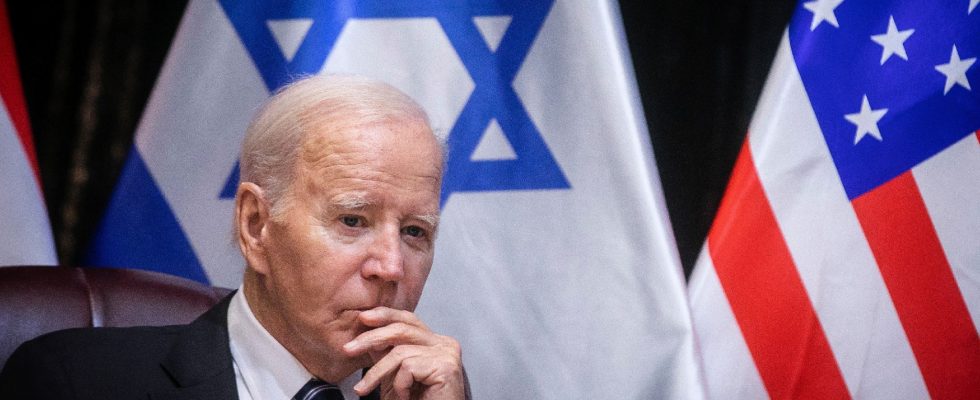America is once again on a war footing in the Middle East, since Hamas’ bloody attack on Israel on October 7. She also opened fire for the first time in this war in defense of her ally: on the 19th, the destroyer USS Carney, which was sailing north of the Red Sea, shot down three cruise missiles and drones launched from Yemen by Houthi rebels – supported by Iran – who were “potentially” heading towards the Jewish state, according to the Pentagon.
While Israel intensifies its strikes on the Gaza Strip, in preparation for a ground offensive aimed at eradicating Hamas terrorists, Washington is increasing shows of force to dissuade Iran and its Lebanese armed wing, Hezbollah, from open a new front. But also to protect its interests – two of its military bases in Iraq were attacked recently. The United States, which has already sent two American aircraft carriers to the area, will deploy its high altitude anti-missile defense system (THAAD) there as well as several batteries of Patriot surface-to-air missiles. Additional troops were also placed on alert – to swell the ranks of some 30,000 men present in the region.
So here is Joe Biden caught up in the Israeli-Palestinian conflict, and forced to play police. He who had symbolically started his mandate with the withdrawal of American soldiers from Afghanistan and wanted to disengage from the Middle East to concentrate on the rivalry with China and, since 2022, the war launched by Russia against Ukraine. The score played by the American president is particularly complex. While showing his support for the Jewish state, he seeks to encourage it not to overreact, so as to spare civilian lives – Israeli bombings have nevertheless caused more than 5,000 victims so far, according to the administration. of Hamas-led Gaza – and to avoid a regional escalation. He knows that the way the Israeli operation in Gaza is carried out – its duration, its intensity, its objectives – will be decisive.
For some, the current crisis punishes the limits of American strategy for decades. Begun under George W. Bush after September 11, 2001, then continued by Barack Obama, the marginalization of the Palestinian question accelerated under Donald Trump with the Abraham Accords – signed between Israel on one side and the United Arab Emirates , Morocco, Bahrain and Sudan on the other – then under the Biden administration, which in recent months has been pushing for a normalization of relations between the Jewish state and Saudi Arabia.
But the Palestinian issue has resurfaced in the most brutal of ways, and force alone will not resolve it. The options seem limited: “Either the Palestinians in Gaza and the West Bank live forever in a stateless vacuum, and the violence will continue; or we find a two-state solution: this is the objective that the United States must pursue,” believes Charles Kupchan, former special assistant to Barack Obama and professor at Georgetown University in Washington.
But will America, which has lost ground in the region, have sufficient political will and weight? “One of the reasons why the two-state solution is in total impasse is the loss of influence of the United States over the actors in the region”, judge Stephen Biddle, professor at Columbia University and former advisor to the US military commands in Iraq and Afghanistan. According to this expert, Washington must now weigh – with the Arab countries – “to bring about a viable government in Gaza, post Hamas; but also obtain a significant change in Israeli policy” – the Netanyahu government being fiercely opposed to the creation of a Palestinian state. It remains to be hoped that the terrible suffering caused by this war will push both parties out of the chaos. Only the United States can encourage them to do so. The security of the region and the world is at stake.
